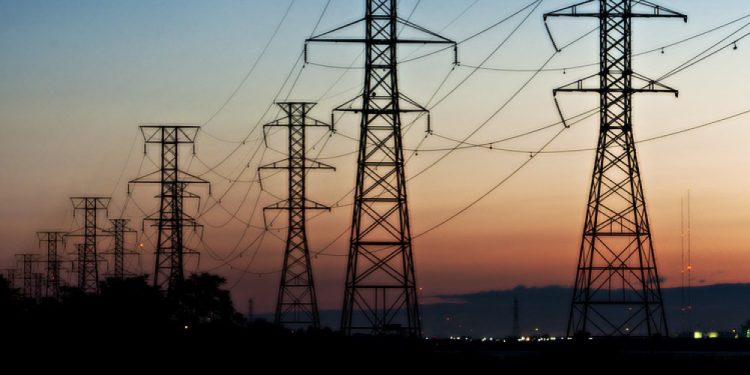(Natural News)—America’s power grid is at escalated risk of faltering due to the imminent major storms or prolonged cold snaps this coming winter, warned the North American Electric Reliability Corp. (NERC), the regulator that monitors the electricity system.
As per NERC’s “2023–2024 Winter Reliability Assessment” published November 8, a sweeping portion of the country that extends from Texas to the Canadian border is not adequately equipped for tough winter conditions. The report indicated that the power grid continues to fray and suffer from underinvestment, despite promises by politicians and regulators to shore it up following deadly blackouts in recent years. “As observed in recent winter reliability events, over 20 percent of generating capacity has been forced offline when freezing temperatures extend over parts of North America that are not typically exposed to such conditions,” the report alerted. “When electricity supplies become constrained, [bulk power system] operators can face a simultaneous sharp increase in demand.”
In a call, NERC told reporters that the grid has traditionally faced its greatest challenges in the summer heat but a confluence of factors in recent years has led the grid to be equally unstable during severe winter weather. “We’ve seen the system become more vulnerable to winter conditions,” said John Moura, NERC’s director of reliability assessment and performance analysis. “For decades, the system had been built and planned around summer peaks.” However, during summer this year, the non-profit also warned that two-thirds of the grid was actually at risk of experiencing summer outages during peak energy use. (Related: Warning: Two-thirds of the North American power grid is at an ELEVATED RISK of experiencing summer outages during peak demand.)
Back in February, the Federal Energy Regulatory Commission approved new cold weather reliability standards for U.S. generators. NERC proposed the standards in response to Winter Storm Uri in 2021, which left almost 250 dead and made Texans face widespread blackouts. “Additional cold weather standards recently adopted by NERC’s Board have been filed for FERC approval,” Moura said in a statement. “This is a positive development in ensuring industry is prepared for extreme cold weather.”
Other issues NERC identified include the growing complexity of forecasting winter load and the curtailment of electricity transfers between reliability coordinators and balancing authorities. “While the curtailments alleviate an issue in one part of the system, curtailments can contribute to supply shortages or affect local transmission system operations in another area,” NERC said.
Meanwhile, as the grid continues to be unstable as winter season approaches, NERC warned Texas, – where voters earlier this week approved a plan to fund more power generation – to be at higher risk of energy shortages this year than last. This is because it is not bringing enough new power online to meet the state’s surging demand, and its existing infrastructure has not been adequately weatherized.
Similar challenges plague areas north of the Lone Star state, according to the report. The regional grid that serves 15 states from Arkansas to Wyoming will be operating with significantly lower backup energy reserves than last year. NERC warned that while the region has the resources it needs to make it through a normal winter, extreme cold weather could “result in shortfalls that can trigger energy emergencies.”
The authors warned that a winter storm of similar scale in the region could result in a repeat of the outages that disrupted last year’s holiday season for millions. The report also concluded that power grid operators are struggling to bring on new generation and weatherize equipment at the pace required to meet the challenges of increased demand and the more extreme and unpredictable weather patterns created by climate change. “This forecast again shows that our nation faces looming grid reliability challenges while electricity demand continues to soar,” said Jim Matheson, CEO of the National Rural Electric Cooperative Association, which represents 900 local electricity providers. “That’s unacceptable and should be cause for concern for all Americans.”
The looming grid disruption is due to neglect and not because of greenhouse gas emissions
According to Mark Spurr, legislative director at the International District Energy Association and president of engineering and consulting firm FVB Energy, a massive grid disruption is inevitable due to three trends that are “getting worse, not better.” He listed the increase in severe weather events due to climate change, rising peak electricity demand, and a growing dependence on natural gas.
“We’re thrilled to see NERC acknowledge what everyone already knows: failure of fossil-fueled power plants, especially gas-fired ones, during the winter, is the greatest threat to grid reliability today,” said Tom Rutigliano, senior advocate for the Sustainable FERC Project at the Natural Resources Defense Council. But he said that NERC’s focus on fuel supply risk “hides that the root cause is simply poor maintenance by power plant owners and the gas industry.” He further pointed out that grid operators must plan for the poor reliability gas plants have demonstrated time and again and hold non-performing plants accountable. “Congress should follow FERC’S recommendation to set reliability standards for the gas industry,” he added.
The National Rural Electric Cooperative Association reportedly warned the Environmental Protection Agency’s (EPA’s) proposed limits on greenhouse gas emissions from coal-, gas- and oil-fired power plants could worsen the grid’s precarious situation. NERC’s reliability assessment showed that our “nation faces looming grid reliability challenges while electricity demand continues to soar,” Matheson said. EPA’s “unlawful, unrealistic and unachievable proposal will result in less electricity, more power outages and higher costs for American families and businesses.”
Visit PowerGrid.news for news related to America’s dwindling electric source.





